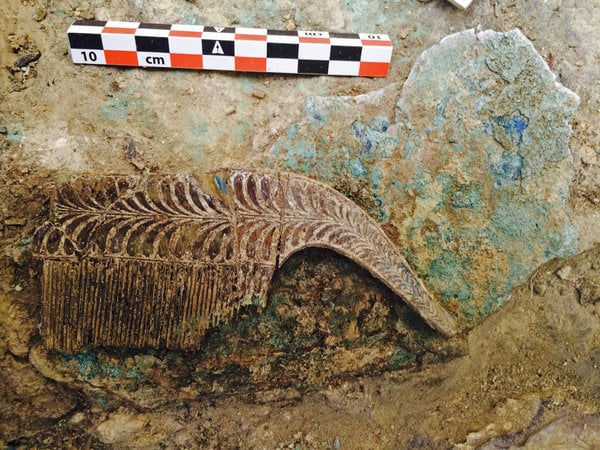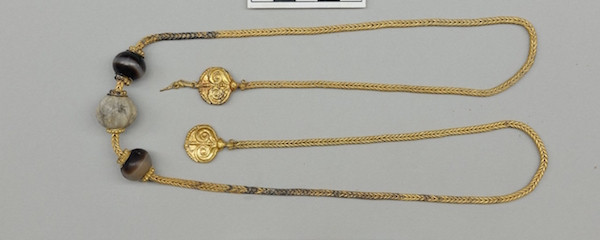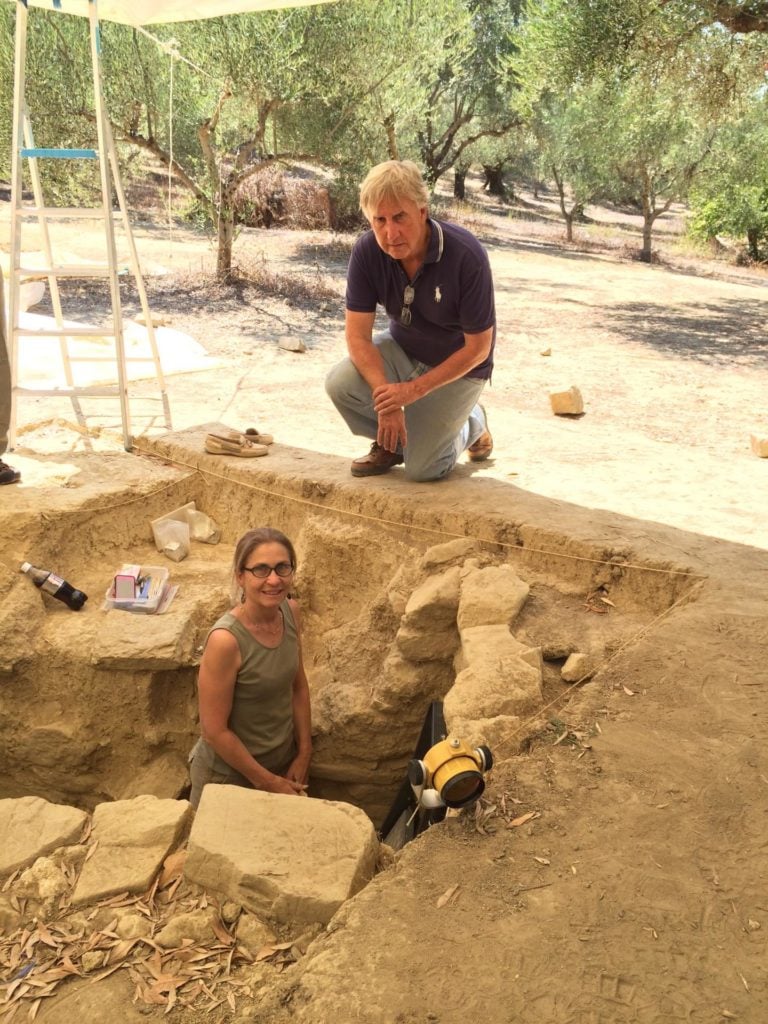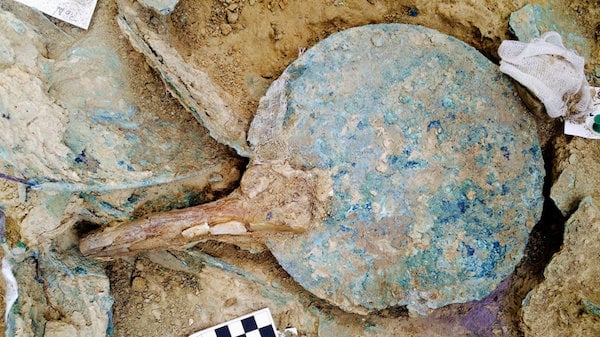Art World
Archaeologists Discover Tomb Filled With 3,500-Year-Old Golden Relics in Greece
It's the most significant archaeological discovery in Greece in decades.

It's the most significant archaeological discovery in Greece in decades.

Henri Neuendorf

A team of American archaeologists from the University of Cincinnati have discovered the remains of an unknown soldier in a 3,500-year-old tomb in Greece.
The find has been described as the most significant archaeological discovery in continental Greece in 65 years. Other recent significant finds include one of the largest ancient burial sites ever discovered in Greece, dating to the time of Alexander the Great and now thought to be a monument to his friend and general Hephaestion.
The skeleton of the man was found alongside weapons and jewelry in the casket, indicating that the deceased had been an important man during his lifetime.

A golden necklace found around the warrior’s neck.
Photo: University of Cincinnati
Scientists believe that the man—who was estimated to have died between the age of 30 and 35—was a powerful warrior, merchant, or raider.
Based on the Minoan inscriptions in the jewelry the skeleton was buried with, researchers believe the man belonged to an early civilization that flourished on the island of Crete around 2,000 BC.

Excavation leaders Sharon Stocker and Jack Davis have worked in the Pylos region of Greece for 25 years. Photo courtesy of the University of Cincinnati.
Archaeologists Jack L. Davis and Sharon R. Stocker of the University of Cincinnati made the discovery while conducting an excavation on the site of the Mycenaean-era Palace of Nestor. The palace was referenced by Homer in The Odyssey as a place were sacrifices were offered to the Gods.
“This latest find is not the grave of the legendary King Nestor, who headed a contingent of Greek forces at Troy in Homer’s Iliad. Nor is it the grave of his father Neleus,” Stocker, senior research associate in the department of classics at the McMicken College of Arts and Science, told the Daily Mail.

A bronze mirror with ivory handle.
Photo: University of Cincinnati
And yet, “This find may be even more important, because the warrior pre-dates the time of Nestor and Neleus by perhaps 200 or 300 years,” she explained. “That means he was likely an important figure at a time when this part of Greece was being indelibly shaped by close contact with Crete, Europe’s most advanced civilization.”
“Whoever he was, he seems to have been celebrated for his trading or fighting in the nearby island of Crete,” Davis added.